Archaeologists Find Evidences of prehistoric cannibalism in Germany
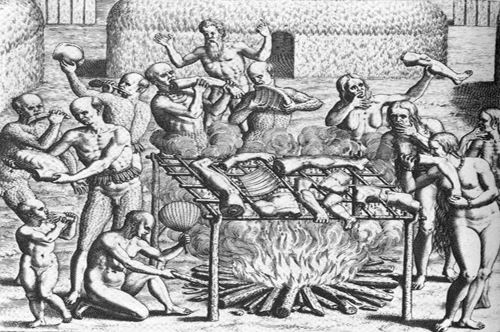
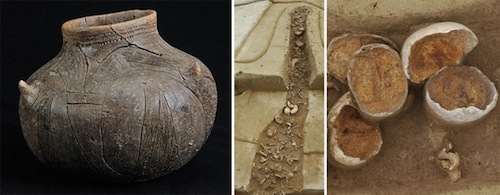
Evidences of mass cannibalism that took place 7,000 years age i.e. during the middle Neolithic Period were found by archaeologists on excavating a prehistoric site in Germany.
For few decades, it appears that hundreds of inhabitants were slaughtered and eaten at the site, before having their less-delicious parts discarded into pits. The remains of 500 victims have been found so far.
Bruno Boulestin, an anthropologist from the University of Bordeaux in France who is working on the site, said, “Human sacrifice at Herxheim is a hypothesis that’s difficult to prove right now, but we have evidence that several hundred people were eaten over a brief period.”
The large number of victims discovered in the pits suggests that the settlement (now called Herxheim) may have served as a kind of ritual depository where people from all over the area would gather to perform custom sacrifices on slaves or war prisoners or other deserving parties.
The excavation at Herxheim is one of only two excavations from this period showing signs of cannibalism, the other being 6,000-year-old bones uncovered in a French cave in 1986. Indeed, cannibalism seems incongruous with common perceptions of the Neolithic Age (roughly 9,500–4,500 BCE), when Hunter-gatherers settled down to form sedentary communities, tend crops and keep domesticated animals. One imagines peaceful farmers in a pastoral, agrarian ideal, not man-eaters.
Next, scientists will examine the chemical structure of the bones unearthed at Herxheim, revealing whether victims grew up eating local foods or foods from other regions. Determining the genesis of the victims at Herxeim will not only shed light on the ceremonial significance of the site, but also on the political climate at the time.
Reconstructing The Past – A Notable Step Forward In Korean Archaeology

Archaeologists with few other experts have reconstructed a girl who is 1,500-year-old. She was perhaps 16 years old and had a wide, flat Asian face, a long neck and a slim body. The girl expired 1,500 years ago. But now she’s reborn – well, partially, at least.
Officials from the Gaya National Research Institute of Cultural Heritage in Korea displayed the restored model of the girl from the Gaya confederacy era (42-562) yesterday at the National Palace Museum of Korea.
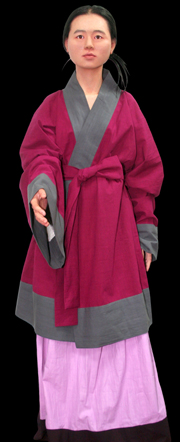
The restoration is the outcome of two years of interdisciplinary work that brought together specialists in archaeology, forensic medicine, anatomy, genetics, chemistry and other fields. It is a notable step forward in Korean archaeology.
In December 2007, archaeologists revealed the complete ruins of the girl and partial remains of three others in a tomb in Changnyeong County, South Gyeongsang. By the time of the unearthing, there had already been a grave robbery.
Archaeologists concluded that the four were attendants of the tomb’s owner because they were placed horizontally. The ruins of the owner,were missing.
“We rarely find bones in such a good condition from the era because soil in Korea is really rich,” said Lee Seong-jun, a researcher at the institute. “There have been restorations, but most of them were based on the imagination. This case, however, is strictly based on medical science, somatology and statistics.”
Lee added that the discovery was the first time forensic experts – in this case from the National Institute of Scientific Investigation – recovered the ruins of an ancient tomb.
Egyptian Mummies Scanned For Heart Diseases and Were Found To Have Identifiable Arteries
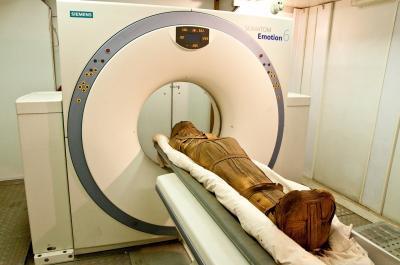
Hardening of the arteries has been noticed in Egyptian mummies, some as old as 3,500 years, signifying that the factor causing heart attack and stroke are not only existing ones; they afflicted ancient people, too.
Study results that appeared in the Nov. 18 issue of the Journal of the American Medical Association (JAMA) and are being presented Nov. 17 at the Scientific Session of the American Heart Association at Orlando, Fla.
The nameplate of the Pharaoh Merenptah (c. 1213-1203 BC) in the Museum of Egyptian Antiquities indicates that, when he died at approximately age 60, he was affected with atherosclerosis, arthritis, and dental decay. Intrigued that atherosclerosis might have been prevailed among ancient Egyptians, Thomas and a team of U.S. and Egyptian cardiologists, joined by experts in Egyptology and preservation, chose 20 mummies on display and in the basement of the Museum of Egyptian Antiquities for scanning on a Siemens 6 slice CT scanner during the week of Feb. 8, 2009.
The mummies underwent whole body scanning with particular attention to the cardiovascular system. The researchers found that had identifiable arteries. The hearts left in their bodies after the mummification process had calcification either clearly seen in the wall of the artery or in the path were the artery should have been. Few mummies had calcification in up to 6 different arteries.
Israel Exhibited Rare Ancient Coins Excavated From The Jewish Temple Site
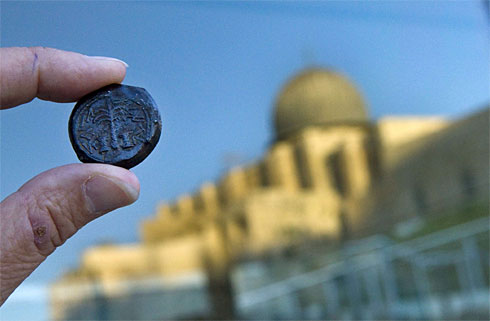
Israel exhibited for the first time on Wednesday a collection of rare coins charred and burn from the Roman destruction of the Jewish Temple nearly 2,000 years ago.
About 70 coins were found in dig at the foot of a key Jerusalem holy site. They give a rare sight into the period of the Jewish rebellion that ultimately led to the devastation of the Second Jewish Temple in A.D. 70, said Hava Katz, curator of the exhibition.
The Jews rebelled against the Roman Empire and took over Jerusalem in A.D. 66. After laying siege to Jerusalem, the Romans violated the city walls and washed out the rebellion, destroying the Jewish Temple, the holiest site in Judaism.
The coins sit inside a glass case, some melted down to unrecognizable hunks of blemished and carbonized bronze from the flames that destroyed the Temple.
“These really show us the impact of the destruction of Jerusalem in the first century,” said Gabriela Bijovsky, an antique coin specialist from Israel Antiquities Authority. “These are a very bright, dramatic example of that destruction.”
“The most important coins we have are from those last four or five years of the rebellion against the Roman army, and one coin we found was actually minted very close to the destruction of the Second Temple,” she said.
The coins were unearthed from a prehistoric street below the Temple Mount, experts said. Archaeologists had to sieve through debris and remove the stones thrown off the Temple Mount during the Roman raid before they found the road and the hoard of coins.
Today the Al Aqsa Mosque compound is situated on top of the remains of the temples. Muslims refer to the site as the Noble Sanctuary, marking the spot from where they believe the Prophet Muhammad ascended to heaven. The contradictory claims make the site one the most explosive issues in the Israel-Palestinian conflict.
The coins are part of larger displays in Jerusalem’s Archaeological Garden, presenting a collection of antique coins that have been uncovered over the past three decades.
The exhibition displays not only the coins minted in Jerusalem during the rebellion but also European, North African and Persian coins that were found around the holy site from various periods.
“This just shows the international character of the city,” Katz said. “It shows the importance of Jerusalem to generations of people … the importance of Jerusalem never faded away for Jews, Christians and Muslims,” she said.
Archaeologists Discover Mummy of A Young Priestess In Peru
An archaeological dig has uncovered the mummy of a young priestess, a member of the elite, with several precious items dating from the period of 300-450 AD in Cahuachi, Peru.
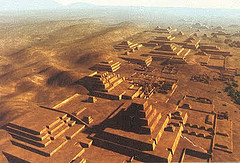
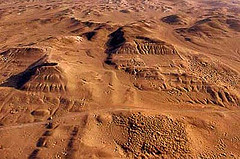
According to Giuseppe Orefici, director of the Nasca Project, the girl must have been an important person. She would have been between 12 and 14 at her time of death and was found inside a series of rooms between the Great Pyramid and what is known as the Orange Pyramid. The building would have shaped a small temple that had 4 columns holding up its roof.
Giuseppe Orefici, said that the archaeologists had to remove a layer or reeds and ropes that wrapped the burial.The body appeared to have been painted and found with an additional vertebra added.
She also had slightly malformed forearms, apparently something self-inflicted by having the arms extended vertically for long periods of time – perhaps as a result of a praying.
She was covered with finely woven fabric that had designs of orcas (killer whales) found in the southern pacific and had obsidian arrow heads.
But the most striking objects are the jewels found in the bundle.
Of these one in particular stands out; an extraordinary golden nose ring bathed in silver, which was found on her nose when uncovered.Also found were necklaces and bracelets of precious spondylus shells among other precious items.
Inquisitively there were also dozens of heads of birds of prey with their beaks tied closed with fine strings, just some accompanied by their full bodies. Also found were a number of ceramic items, finely decorated with geometric patterns.
Although there is much to discover about the supposed priestess, researchers have started the journey by trying to decode the meaning of the burial objects.
The find has been taken to the city of Nazca where it is being studied by anthropologist and physicist Andrea Drusini from the University of Padua.